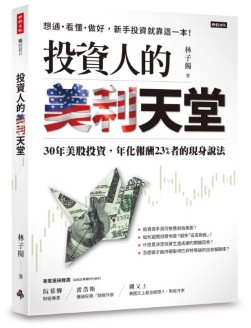Differences between Taiwan and U.S. listed companies
Rule 40, a valuation model perfect for SaaS companies. Investors are most concerned about the growth of the company and how much money it can make. In particular, the profitability conditions for companies listed on the US stock market are relatively loose, unlike Taiwan or China, which highlights corporate profitability as a necessary condition for listing.
Just because of the difference in this listing rule, it has completely affected many aspects of the U.S. and Taiwan stock markets:
- Type of business: Because US stocks do not list corporate profitability as a necessary condition for listing, they can certainly attract companies in different life cycles (the process of company birth, growth, growth, decline and even death). Especially in recent years, almost most of the broad technology stocks listed on the U.S. stocks are in the growth period less than a few years after they were born. It is the most likely to grow and explode. In contrast, all companies listed on the Taiwan Stock Exchange are already in the middle and late stages of the company’s life cycle; or they are mature companies, but such companies are no longer able to have obvious explosiveness.
- Valuation: The valuation method of US stocks mainly depends on the price-to-revenue ratio (P/S), and also talks about the price-to-earnings (P/E) ratio, but it does not pay as much attention to the price-to-revenue ratio. Investors in Taiwan stocks are more obsessed with the P/S ratio and hardly talk about the price-to-revenue ratio. You are welcome to refer to my other blog post on “US and Taiwan stocks investors have very different valuation methods“.
- Corporate management and fundraising mentality: Corporate operations require capital, and US stock companies regard IPO fundraising and repayment of early investors’ funds as the primary purpose of course; but in Taiwan stocks, this is not the main reason for listing. Readers who are interested in the reasons why companies go public, you are welcome to refer to my other blog post on “Why a companies go public?“
- Securities regulation and the mentality of the capital market: Obviously, based on the above-mentioned conditions-Taiwan stocks are more conservative, focusing on the equity of investors in the stock market. The authority decides whether a company can be listed, and the company must pass an audit to go public. U.S. stocks are more active, focusing on the future growth of companies. As long as stocks pass general filtering and complete registration, they can be listed. As for shareholder rights, unless major deficiencies or law violations require SEC intervention, it is entirely up to the market and investors to decide the ultimate value of the listed companies.
Rule 40
But the question is, how should investors select the type of companies with the most potential for growth and explosion (newly listed, at a loss, and high growth rate)? As I mentioned in section 4-4 of my book “The Rules of Super Growth Stocks Investing”, in response to this trend, U.S. stock investors have developed one of the most widely accepted valuation methods in recent years───Rule 40. The following are the main points of the Rule 40:
- Formula: Revenue growth rate + profit rate> 40% (profit rate can be negative). As long as the result is greater than 40% of the enterprises are eligible.
- Its original source is the article “The Rule of 40% for a Healthy SAAS Company” published by venture capitalist Brad Feld in his blog article in 2015.
- The rationale behind it is very simple. If supported by a very fast revenue growth rate, investors can accept a slightly loss-making company.
- The profit margin can adopt EBITDA, operating income, net income, free cash flow, or operating cash flow, based on the actual situation; the inventor recommends using EBITDA.
- Applicable to SaaS companies whose monthly recurring revenue (MRR: Monthly Recurring Revenue) has reached US$1 million (but Tomasz Tunguz of Redpoint Ventures believes that those with annual revenue of more than US$ 50 million are more suitable).
Example of Rule 40
We apply the Rule 40 to Shopify (ticker: SHOP), and it is obvious that Shopify fully meets the screening criteria (see Table 1 in Section 4-4 in my book “The Rules of Super Growth Stocks Investing”) . This is mainly due to the fact that Shopify’s long-term revenue growth rate has been extremely amazing, with only a small disproportionate loss. Investors who know the good don’t care at all, not to mention its loss compared to the market value and revenue growth rate. It can be ignored (the worst EBITDA margin in 2018 is still -6.65%).
Because of this, Shopify’s stock price has risen by 5,330% since its listing in 2013, and only recently hit the highest price of 1,650 per share since its listing on July 23, 2021.

Rule 40 is not applicable in Taiwan Stock Market
Regrettably, I personally think that the Rule 40 does not apply to Taiwan stocks. The reason is very simple-a loss-making company in the growth stage cannot pass the listing review, and the Rule 40 is useless at all. Another reason is that there are almost no so-called SaaS software listed companies in Taiwan stocks. For the reason, please refer to my other blog post “The failed Taiwan software industry policy“.
Disclaimer
- The content of this site is the author’s personal opinions and is for reference only. I am not responsible for the correctness, opinions, and immediacy of the content and information of the article. Readers must make their own judgments.
- I shall not be liable for any damages or other legal liabilities for the direct or indirect losses caused by the readers’ direct or indirect reliance on and reference to the information on this site, or all the responsibilities arising therefrom, as a result of any investment behavior.
